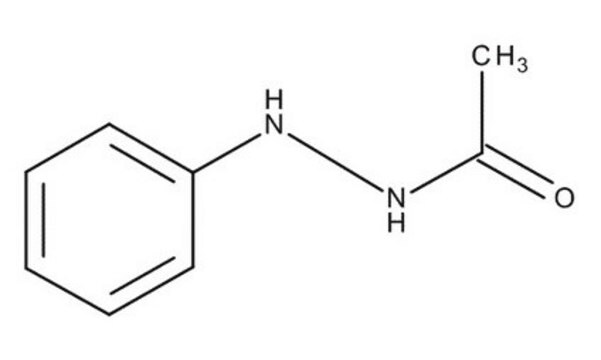A4626
1-Acetyl-2-phenylhydrazine
≥98%
Synonym(s):
N-Acetyl-N′-phenylhydrazine, acetylphenylhydrazine
About This Item
Recommended Products
Assay
≥98%
form
(Powder with Chunk(s) or Crystals with Chunk(s))
mp
128-131 °C (lit.)
SMILES string
CC(=O)NNc1ccccc1
InChI
1S/C8H10N2O/c1-7(11)9-10-8-5-3-2-4-6-8/h2-6,10H,1H3,(H,9,11)
InChI key
UICBCXONCUFSOI-UHFFFAOYSA-N
Looking for similar products? Visit Product Comparison Guide
Application
Biochem/physiol Actions
Signal Word
Danger
Hazard Statements
Precautionary Statements
Hazard Classifications
Acute Tox. 3 Oral
Storage Class Code
6.1C - Combustible acute toxic Cat.3 / toxic compounds or compounds which causing chronic effects
WGK
WGK 3
Personal Protective Equipment
Certificates of Analysis (COA)
Search for Certificates of Analysis (COA) by entering the products Lot/Batch Number. Lot and Batch Numbers can be found on a product’s label following the words ‘Lot’ or ‘Batch’.
Already Own This Product?
Find documentation for the products that you have recently purchased in the Document Library.
Customers Also Viewed
Articles
Cancer research has revealed that the classical model of carcinogenesis, a three step process consisting of initiation, promotion, and progression, is not complete.
Our team of scientists has experience in all areas of research including Life Science, Material Science, Chemical Synthesis, Chromatography, Analytical and many others.
Contact Technical Service







